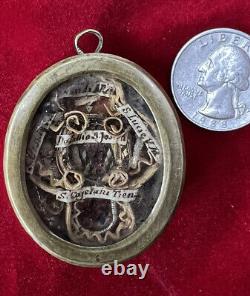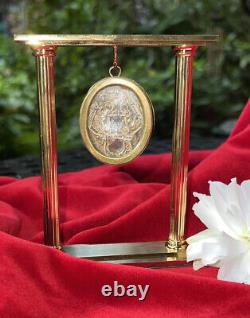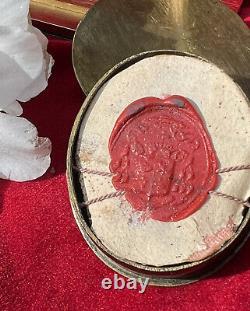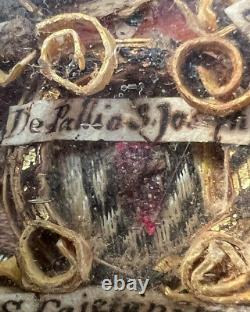
- Home
- Brand
- Avoca (19)
- Belleek (80)
- Cross (40)
- Dresden (9)
- Dresden Porcelain (6)
- Franz (8)
- Guinness (11)
- Mattel (7)
- Nicholas Mosse (5)
- Peterson (45)
- Peterson's (10)
- Petersons (6)
- Royal Tara (8)
- Tiffany & Co. (7)
- Volkstedt (8)
- Wade (8)
- Wade Ireland (5)
- Waterford (548)
- Waterford Crystal (36)
- Waterford®crystal (7)
- ... (1145)
- Industry
- Item Height
- Material
- Bone China (22)
- Brass, Crystal (7)
- Bronze (11)
- Cardboard, Paper (11)
- Ceramic (10)
- Ceramic & Porcelain (11)
- Ceramic, Porcelain (7)
- Crystal (499)
- Crystal, Glass (29)
- Glass (40)
- Gold (13)
- Lace (8)
- Lead Crystal (12)
- Linen (20)
- Metal (12)
- Paper (11)
- Pewter (7)
- Porcelain (101)
- Wood (15)
- Wool (7)
- ... (1165)
- Subject
- Type
- Ballpoint Pen (10)
- Bowl (44)
- Candle Holder (37)
- Centerpiece Bowl (9)
- Champagne Flute (18)
- Decanter (23)
- Electric Lamp (24)
- Fashion Doll (10)
- Figurine (90)
- Fountain Pen (13)
- Nativity Set (10)
- Ornament (16)
- Photograph (27)
- Poster (12)
- Table Lamp (26)
- Tablecloth (15)
- Tea Pot (13)
- Tea Set (18)
- Vase (89)
- Wine Glass (10)
- ... (1504)
5 Relic SAINT SECHNALL BISHOP IRELAND St. PATRICK Joseph LUCY CATHOLIC RELIQUARY

















The MAJORITY of relics available now on the internet are fake. The advent of 3D printing had exasperated the problem. If you send me an item number, I will gladly offer my humble opinion as to its authenticity. This is a multi reliquary containing 5 desirable and rare relics.
Joseph, Spouse of the Virgin Mary. Cajetan Thiene, Confessor + Founder.Secundinus born 375AD, aka St. Sechnall / Seachnall was a nephew + disciple of St Patrick and one of the first bishops of Armagh. He was the founder and patron saint of the Church of Sechnall (County Meath), not far from Tara. Saint Joseph was the Spouse of the Virgin Mary and foster father to Jesus. Saint Joseph is regarded as the patron saint of workers.
The month of March is dedicated to Saint Joseph. Pope Pius IX declared him to be the patron and protector of the Catholic Church, in addition to his patronages of the sick and the promise of a happy death, due to the belief that he died in the presence of Jesus and Mary. Saint Ursula, princess, the daughter of a Christian British king and Saint Daria. She traveled Europe in the company of either 11 or 11,000 fellow maidens; the 11,000 number probably resulted from a misreading of the term "11M" which indicated 11 Martyrs, but which a copyist took for a Roman numeral. (M=1000) Ursula and her company were tortured to death to in an effort to get them to renounce their faith. Saint Lucy, whose name means "light" is the patron saint of the blind.She is often depicted with a golden plate holding her eyes and often holds a palm branch, which is a symbol of victory over evil. Saint Cajetan, was an Italian Catholic priest and religious reformer. He is known as the patron saint of the unemployed, gamblers, Argentina, and good fortune. He was a spiritual aspirant in the mold of St. Francis of Assisi who gave up his riches for leading a life of Christian piety.
The reliquary dates to c. 1815 and is Italian in origin. It comes complete with a heavy brass display.
2" x 1 1/2" x 1/2. The display stand measures 5" x 4". The reliquary is sealed with the crisp + intricate. This relic was once part of the private collection of a French Archbishop. His name, coat of arms, and a short biography will be included for the relic's new custodian.Please see my other listings. For years I had a chapel in my house, where I not only displayed my relic collection, but also has a consecrated altar and tabernacle with the Holy Eucharist. After my retirement, I had to downsize, and I no longer have the luxury of having an entire chapel in my home to display and store my collection. This relic is one of my treasures.
I do not have room to display it, and I have stored this relic in a bank safety deposit box as I live in a possible flood zone. I've realized it's now time for others to become the guardians of these holy relics, and venerate them properly. I guarantee this relic to be authentic and as described forever. Counterfeit Relics are increasingly more and more common. I have been collecting Relics and reliquaries for two decades.
I consider myself somewhat of an expert in the field. There is no such thing as an authentic "tube" reliquary, nor are ANY relics of John Paul, Edith Stein, St. The Shroud of Turin, Padre Pio authentic...
They are all counterfeit, guaranteed. Saint Secundinus aka Saint Sechnall - Bishop Ireland.
Son of Restitutus, a Lomard, and Liamain, sister of St. Patrick, he was one of nine brothers, eight of whom became bishops in Ireland. His early life and training is obscure, but he appears to have studied in Gaul, and to have accompanied St. Patrick to Ireland in 432. The first documentary evidence we have is an entry in the Irish Annals recording the arrival of St. Sechnall and his brother St. He had much experience before his coming to assist in the conversion of the Irish. In 433 he was appointed by St. Patrick as first Bishop of Dunshaughlin co. Meath, and so great was his reputation for learning and prudence, that he was assistant Bishop of Armagh from 434 until his death. At the commencement of his episcopal rule, the local fair (aonach) was accustomed to be held in the church enclosure, and as the people ignored the saint's denunciation as to holding a fair on hallowed ground, we read that "the earth opened and swallowed up thirteen horses, chariots and drivers, while the remainder fled". He died after an episcopate of fourteen years.The name of his see in the corrupt form, Dunshaughlin (correctly Domnach Sechnaille), testifies to the veneration in which he was held. What Does Scripture Say About Relics? (1) The starting point for an examination of Scripture on this point should be Acts 19:11-12. God did extraordinary miracles through Paul, so that even handkerchiefs and aprons that had touched him were taken to the sick, and their illnesses were cured and the evil spirits left them.
But these miraculous relics weren't limited to Paul. In Acts 5:12-16, we read. The Apostles performed many signs and wonders among the people... More and more men and women believed in the Lord and were added to their number.As a result, people brought the sick into the streets and laid them on beds and mats so that at least Peter's shadow might fall on some of them as he passed by. Crowds gathered also from the towns around Jerusalem, bringing their sick and those tormented by impure spirits, and all of them were healed.
We see this in the life of Christ Himself. And a woman was there who had been subject to bleeding for twelve years. She had suffered a great deal under the care of many doctors and had spent all she had, yet instead of getting better she grew worse.
When she heard about Jesus, she came up behind him in the crowd and touched his cloak, because she thought, "If I just touch his clothes, I will be healed". Immediately her bleeding stopped and she felt in her body that she was freed from her suffering. At once Jesus realized that power had gone out from him. He turned around in the crowd and asked, Who touched my clothes? "You see the people crowding against you, " his disciples answered, and yet you can ask,'Who touched me? But Jesus kept looking around to see who had done it. Then the woman, knowing what had happened to her, came and fell at his feet and, trembling with fear, told him the whole truth.He said to her, Daughter, your faith has healed you. Go in peace and be freed from your suffering.
This is a very different miracle from the ones we're used to. Here, simply touching the clothing of Christ heals this woman, before He's even aware that she's there. Mark actually makes a point of including the fact that He felt the power go out from Him, but still asked who it was who had touched Him. And Jesus ascribes the healing to the woman's faith, although it's clear that His own power is the operative power of healing.She's got the faith to believe that simply to touch something worn by Christ is sufficient to be healed. Some Protestants consider that superstition, but our Lord apparently does not. Go back to the Old Testament, to Elisha.
Elisha died and was buried. Now Moabite raiders used to enter the country every spring.
Once while some Israelites were burying a man, suddenly they saw a band of raiders; so they threw the man's body into Elisha's tomb. When the body touched Elisha's bones, the man came to life and stood up on his feet. This passage is important, because it shows that the Saint isn't actively performing these, in the way that other miracles are performed.Even after Elisha's dead, God works through him. That's the reason relics work, at the end of the day: because God wills to use all sorts of things to bring about healing and salvation. But He doesn't choose randomly - in every case, it's either been His Son or the Saints who He works through.
Finally, we know that the early Church used relics, as well. That is, just as Elisha's bones show that healing relics pre-date the New Testament, the early Church shows that they continue on after the New Testament.

